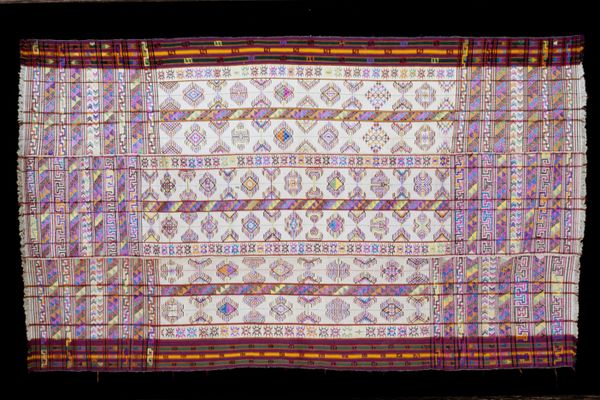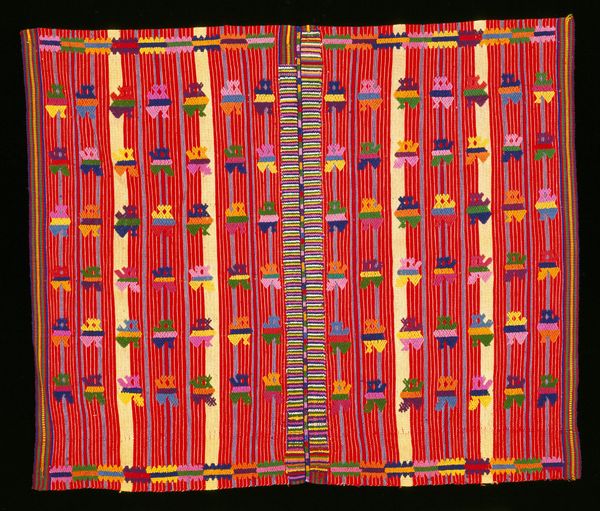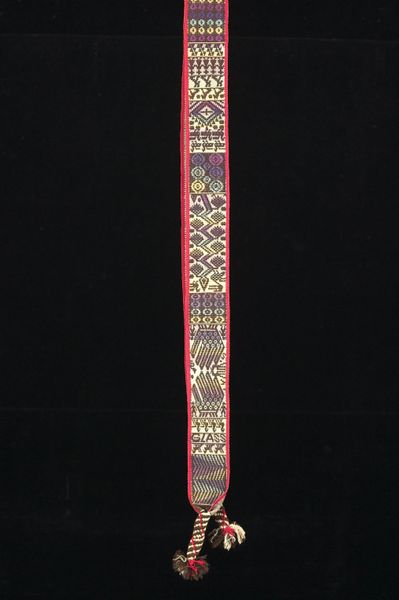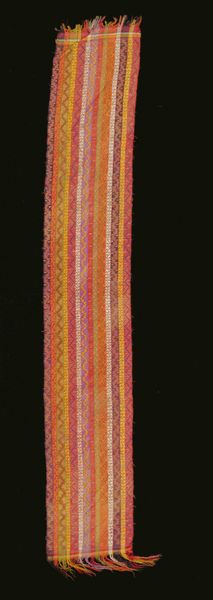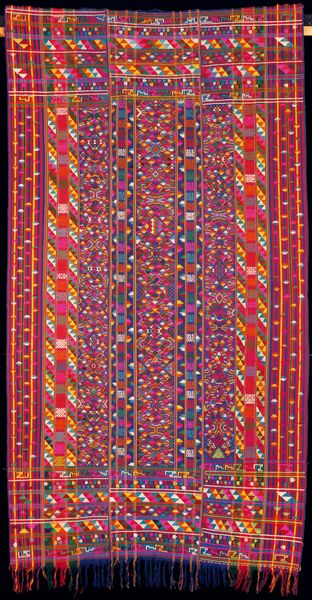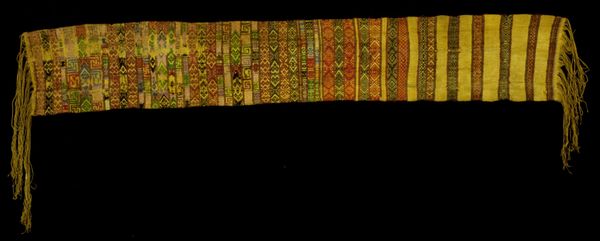
fibre-art, silk, weaving, textile, cotton
#
fibre-art
#
silk
#
pattern
#
weaving
#
textile
#
geometric
#
cotton
#
decorative-art
Dimensions: 41 x 2 3/4 in. (104.14 x 6.99 cm)
Copyright: Public Domain
Curator: Take a moment to admire this exquisite "Belt," a textile piece dating from around the 20th century, currently residing here at the Minneapolis Institute of Art. Editor: Immediately striking is its assertive verticality—the object really drives your gaze upwards. The palette of reds and oranges radiates a certain warmth, a feeling of contained energy, and this sensation contrasts so elegantly with those dangling little rectangular figures all along its sides... fascinating. Curator: Yes, that warmth you're picking up on likely carries intentional cultural meaning, especially considering its creation involves intricate weaving with fibres, silk, and cotton. These techniques often function as encoded cultural storytelling. It almost looks like it might have a cosmological or religious function. Editor: Precisely. This interplay of textures and patterns works brilliantly—geometrics repeat within that core panel framed in fiery hues, generating not just decorative pleasure, but a structural rigor as well. The tassels rhythmically amplify that primary form so distinctly. What can we say about how it would have been worn? Curator: These belts are thought to serve as markers of identity, maybe family affiliation, ritual roles, or other personal characteristics of the wearer. The symbols could act as prayers for safe journeys or be references to nature and its powers. Editor: It almost assumes an iconic presence – the very shape feels like some kind of symbol. How would you read this visual language? What can we draw from a semiotic reading? Curator: It all goes into the collective memory, the deep language that goes back generations, even if now its creators are anonymous. The arrangement can offer viewers entry into understanding its specific symbolism and its relation to their individual story. Editor: What I find wonderful about looking at it, at length, is how that language of colors and lines is constantly suggesting possibilities—it gives such room for interpretation of the original ideas. It does more than identify, I suggest that it communicates with each and every owner and interpreter. Curator: And therein resides a key to experiencing artwork like this, the convergence of intention, representation, and feeling embodied into the form itself. Editor: A lovely summation indeed, of the complex interactions that happen the minute anyone sets their eyes on such a finely articulated thing.
Comments
No comments
Be the first to comment and join the conversation on the ultimate creative platform.



